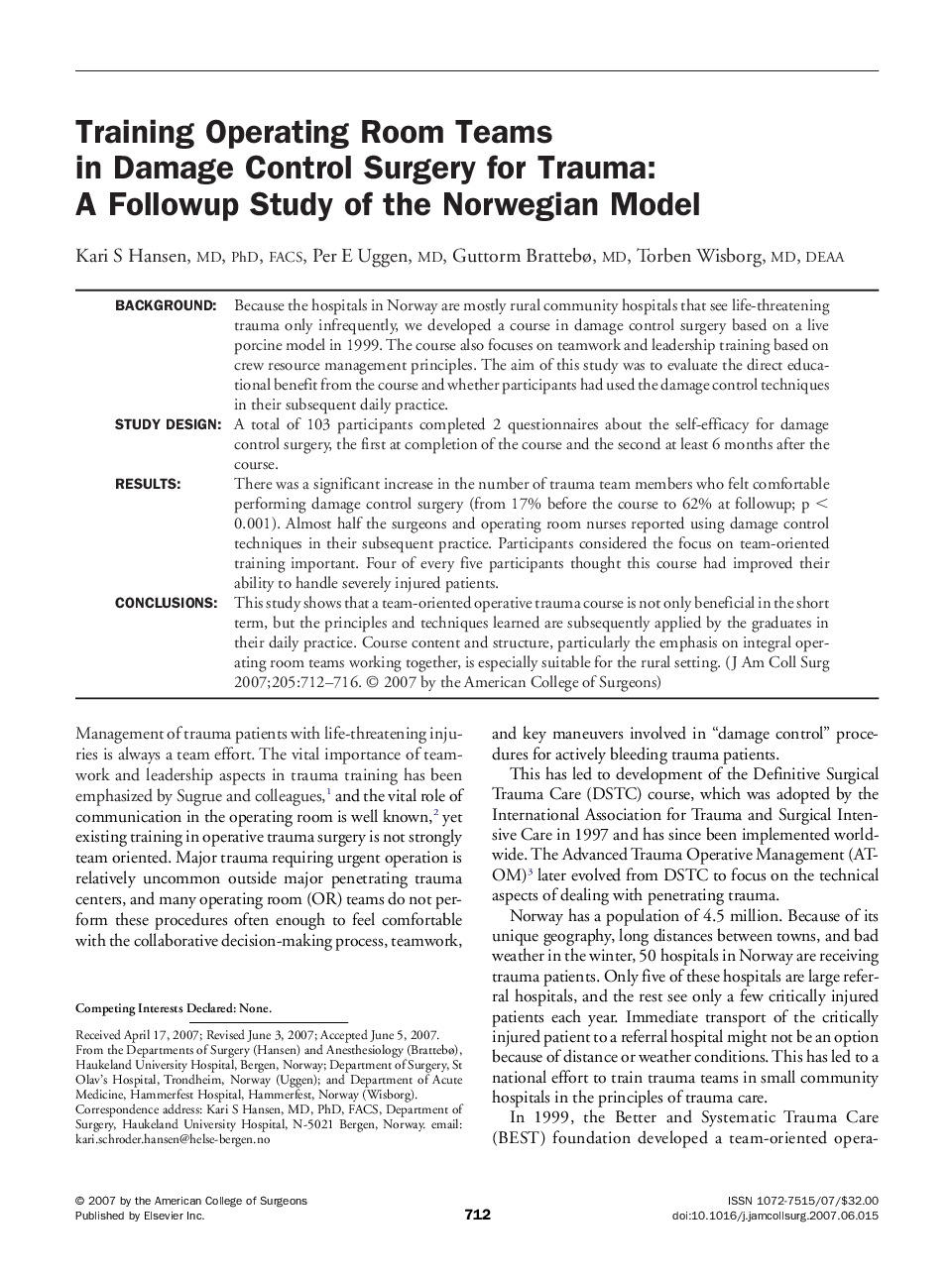| Article ID | Journal | Published Year | Pages | File Type |
|---|---|---|---|---|
| 4294756 | Journal of the American College of Surgeons | 2007 | 5 Pages |
BackgroundBecause the hospitals in Norway are mostly rural community hospitals that see life-threatening trauma only infrequently, we developed a course in damage control surgery based on a live porcine model in 1999. The course also focuses on teamwork and leadership training based on crew resource management principles. The aim of this study was to evaluate the direct educational benefit from the course and whether participants had used the damage control techniques in their subsequent daily practice.Study DesignA total of 103 participants completed 2 questionnaires about the self-efficacy for damage control surgery, the first at completion of the course and the second at least 6 months after the course.ResultsThere was a significant increase in the number of trauma team members who felt comfortable performing damage control surgery (from 17% before the course to 62% at followup; p < 0.001). Almost half the surgeons and operating room nurses reported using damage control techniques in their subsequent practice. Participants considered the focus on team-oriented training important. Four of every five participants thought this course had improved their ability to handle severely injured patients.ConclusionsThis study shows that a team-oriented operative trauma course is not only beneficial in the short term, but the principles and techniques learned are subsequently applied by the graduates in their daily practice. Course content and structure, particularly the emphasis on integral operating room teams working together, is especially suitable for the rural setting.
